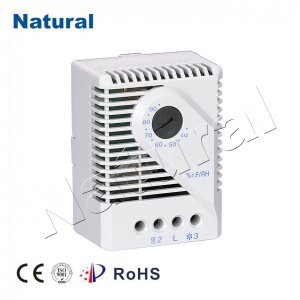Introduction

Mechanical temperature switches are essential components in various industrial and domestic applications, enabling automated control of processes based on temperature changes. These switches rely on mechanical principles to trigger a response when a certain temperature threshold is reached. In this article, we will delve into the workings of mechanical temperature switches, their applications, and their advantages. Mechanism and Working Principle Mechanical temperature switches operate on a simple yet effective mechanism. They consist of a bimetallic strip, which is composed of two different metals with varying coefficients of thermal expansion, bonded together. When exposed to temperature fluctuations, this strip bends due to the uneven expansion of the metals. This bending action is then leveraged to open or close an electrical circuit, depending on the design of the switch. The bimetallic strip is connected to a contact mechanism. When the strip bends, it causes the contact mechanism to move, thereby making or breaking an electrical connection. For example, in a heating system, when the temperature rises above a predetermined level, the strip bends and breaks the electrical circuit, turning off the heater. Conversely, when the temperature falls below a certain threshold, the strip straightens, reconnecting the circuit and turning the heater back on. Applications Mechanical temperature switches find application in various industries and scenarios due to their reliability and cost-effectiveness. Some common applications include: HVAC Systems: Heating, ventilation, and air conditioning systems utilize temperature switches to maintain a comfortable indoor environment. They regulate the operation of heating or cooling equipment based on the desired temperature range. Industrial Processes: Mechanical temperature switches are used in manufacturing processes to control the temperature of machinery, ensuring optimal working conditions and preventing overheating. Automotive: These switches are employed in vehicles to monitor engine temperature. If the engine gets too hot, the switch can trigger a warning light or shut down certain functions to prevent damage. Appliances: Household appliances like ovens, coffee makers, and water heaters use mechanical temperature switches to control heating elements and maintain consistent temperatures. Safety Systems: Mechanical temperature switches are integral to safety systems, such as fire detection and suppression systems. They trigger alarms or release suppression agents when the temperature rises significantly. Advantages Reliability: Mechanical temperature switches are known for their robustness and reliability. They can operate effectively in harsh environments and are less prone to electronic failures compared to their electronic counterparts. Simplicity: The straightforward design of mechanical temperature switches contributes to their ease of use and installation. Their operation is based on fundamental mechanical principles, making them intuitive and easy to understand. Cost-Effective: These switches are generally more affordable than electronic alternatives, making them a preferred choice for applications where cost is a significant factor. Conclusion In the world of temperature control, mechanical temperature switches play a crucial role by providing a dependable and cost-effective solution. Their ingenious mechanism based on the behavior of bimetallic strips ensures accurate temperature monitoring and control across a wide range of applications. As technology advances, these switches continue to prove their worth by offering a simple, yet effective, solution to the complex task of temperature regulation.